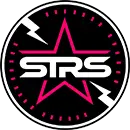Booking studio time is an exciting moment in your musical career, and a major step in taking your music to a whole new level. So, when you are ready to embark on the journey of committing your music to disk, you want to be sure you are prepared to make the most of your time (and money) in the studio. There are a few key things to focus on that are essential to a productive and efficient session.
FINISH WRITING YOUR SONG
Work out the vocal and instrumental parts ahead of time. If your song isn’t ready, write and rehearse before your session. It’s extremely beneficial to have a clear idea of the musical content you are setting out to record. Whether it’s structured songs or loose jams, make sure you don’t come into the studio blindsided by the revelation that you actually need some music to put to disk. If you’re a songwriter, your songs should be in their (nearly) final form. If you’re jamming, make sure you have a basic chord structure to follow, and that all the musicians are on the same page.
The best use of studio time is recording good takes.
WRITE OUT YOUR CHORDS & LYRICS CLEARLY
Bring typed out lyrics and your most accurate tabs, chords, or notation to your session. Label the sections: verse, chorus, etc. Make an extra copy so your engineer can quickly understand how the song is structured and communicate about it.
PRACTICE TECHNICAL PROFICIENCY
Rehearsing in the beautiful and spacious studio might feel luxurious, but you might rather spend your hard earned studio time recording your parts to disk and moving on. Less takes mean more time for overdubs, and backing tracks, and more money to pay that string quartet you’ve always heard in your head. Practice at home, before you come into the studio, so that you can be confident that when you come in to put your ideas to disk, you can play them exactly how you hear them in your head.
PRACTICE WITH A METRONOME
Although some songs allow for an ebbing and flowing tempo, having a consistent time element can keep a song grounded. If you are recording guitar or piano parts first, with the intention of adding a rhythm section later, tracking to a metronome will make life for the rhythm players much easier down the road. Everyone should play with a metronome, so that when it’s time to record to one, it doesn’t feel so unnatural.
MAINTAIN YOUR GEAR
Show up to your session with gear that works. Don’t forget to bring: • Fresh guitar strings and extra strings • Picks, capos, batteries, and adapters • Instrument cables and power cables • Fresh drum heads and extra sticks
STAY HEALTHY
Get some quality sleep and good food before your session. Celebrate after you finish your recording, not during.
If you are hitting the mark on these categories, you can be certain that your studio time will be well spent making the best record you can make.
